Aluminum alloy CNC machining parts process knowledge
Aluminum is the most widely used and widely used metal material among non-ferrous metals, and its application range is still expanding. There are more than 700,000 kinds of aluminum parts produced using aluminum materials. Today, I will introduce to you the process flow of aluminum CNC machining parts and how to avoid CNC processing deformation.
1.The advantages and characteristics of aluminum are as follows:
1) Low density
The density of aluminum is about 2.7g/cm3, which is only 1/3 of iron or copper.
2) Strong plasticity
Aluminum has good ductility and can be made into various products by pressure processing methods such as extrusion and stretching. At the same time, it can also ensure the hardness of the finished product.
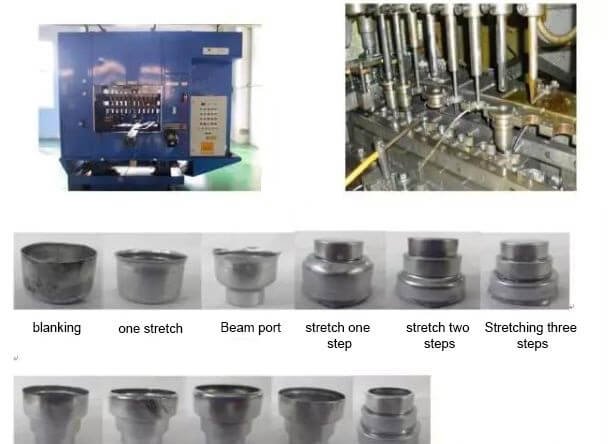
3) Corrosion resistance
Aluminum is a metal with a strong negative charge. Under natural conditions or after anodizing, a protective oxide film will form on the surface, which is much more corrosion-resistant than steel. It can ensure that the parts can still be used normally in a corrosive environment.
4) Easy to strengthen
The strength of pure aluminum is not high, but it can be increased by anodizing, and the beauty of the parts is also guaranteed.
5) Convenient surface treatment
Surface treatment can further enhance or change the surface properties of aluminum. Nowadays, the aluminum anodizing process is quite mature and stable in operation, and is widely used in the processing of aluminum CNC parts.
6) Environmental protection
Good conductivity and easy recycling are very suitable for today’s market environment.
2.Aluminum alloy CNC processing parts technology
1) Aluminum punching
① Cold punching
Using material aluminum particles, using extruders and molds for one-time molding, it is suitable for cylindrical products or product shapes that are difficult to achieve with stretching processes, such as elliptical, square, and rectangular products. The tonnage of the machine used is related to the cross-sectional area of the product. The gap between the upper die punch and the lower die tungsten steel is the wall thickness of the product. When the upper die punch and the lower die tungsten steel are pressed, the vertical gap to the bottom dead point is the top thickness of the product.
Advantages: short mold opening cycle, lower development cost than stretching die.
Disadvantages: long production process, large fluctuations in product size during the process, and high labor costs.
② Stretching exercise
Using material aluminum skin. It is suitable for aluminum products with arcs and non-cylindrical shapes, and can be deformed multiple times using continuous mold machines and molds to meet shape requirements.
Advantages: The size of complex and multi-deformed products is stable during the production process, and the product surface is smoother.
Disadvantages: The mold cost is high, the development cycle is relatively long, and the requirements for machine selection and precision are high.
2) Surface treatment of aluminum alloy CNC parts
① Sandblasting (shot peening)
The process of using the impact of high-speed sand flow to clean and roughen the metal surface. Using this method to treat the surface of aluminum CNC parts can make the workpiece surface obtain a certain degree of cleanliness and different roughness. Not only does it improve the mechanical properties of the workpiece surface, thereby improving the fatigue resistance of aluminum parts, but it also increases the adhesion between it and the coating, prolongs the durability of the coating, and is also conducive to the leveling and decoration of the paint. We often see this process in various Apple products.
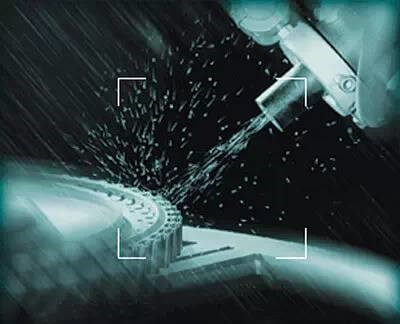
② Polishing
Use mechanical, chemical or electrochemical effects to reduce the surface roughness of aluminum alloy CNC parts and obtain a bright and smooth surface. The polishing process is mainly divided into: mechanical polishing, chemical polishing, and electrolytic polishing. After mechanical polishing and electrolytic polishing, aluminum alloy CNC parts can achieve an effect close to the mirror of stainless steel. This process gives people a sense of high-end simplicity, fashion and future.
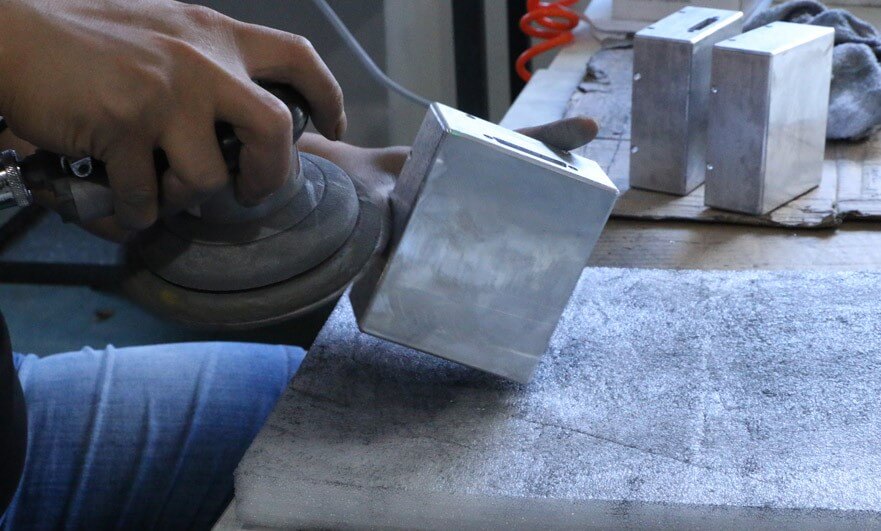
③ Drawing
Metal wire drawing is a manufacturing process that uses sandpaper to repeatedly scrape lines from aluminum sheets. Wire drawing can be divided into straight drawing, random drawing, spiral drawing, and thread drawing. The metal wire drawing process can clearly show every tiny silk mark, making the metal matte have a delicate hair luster, and the product has a sense of fashion and technology.
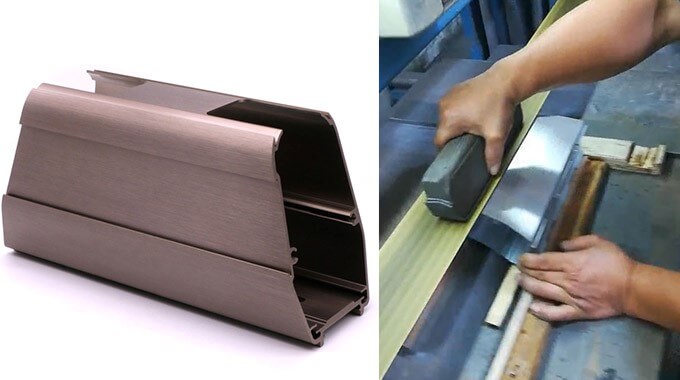
④ High gloss cutting
Use an engraving machine to strengthen the diamond knife on the main shaft of the engraving machine, generally rotating at a high speed of 20,000 rpm to cut the parts and produce a local highlight area on the surface of the product. The brightness of the cutting highlight is affected by the milling and drilling speed. The faster the drilling speed, the brighter the cutting highlight, and vice versa, the darker it is, and it is easy to produce cutting lines. High gloss and bright cutting is particularly widely used on mobile phones, such as iPhone 5. In recent years, some high-end TV metal frames have adopted high-gloss CNC milling technology. Coupled with anodizing and wire drawing technology, the TV is full of fashion and technology.
⑤ Anodizing
Anodizing refers to the electrochemical oxidation of metals or alloys. Under the corresponding electrolyte and specific process conditions, aluminum and its alloys form an oxide film on aluminum products due to the effect of the impressed current. Anodizing can not only solve the defects of aluminum CNC machined parts such as surface hardness and wear resistance, but also prolong the service life of aluminum CNC machined parts and enhance the aesthetics. It has become an indispensable link in the surface treatment of aluminum CNC machined parts and is currently the most widely used and very successful process.
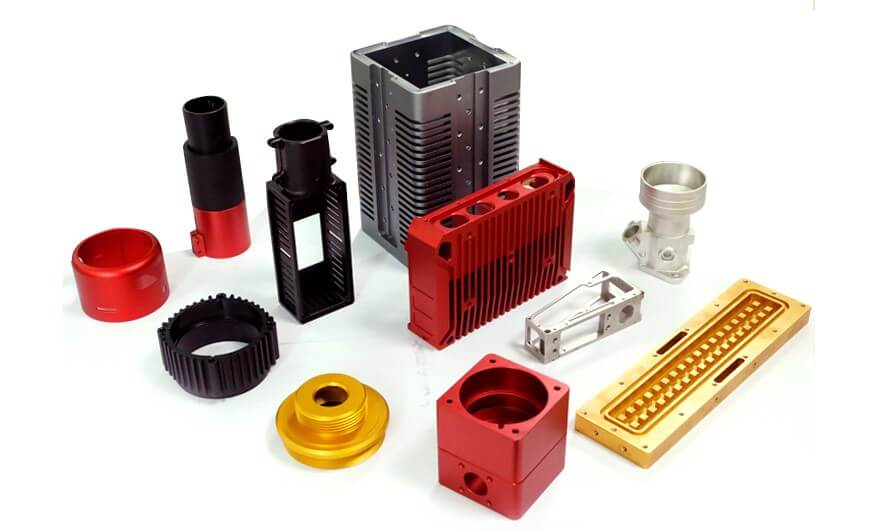
⑥ Two-color anode
Two-color anodizing refers to anodizing on a product to give different colors to specific areas. The two-color anodizing process is rarely used in the television industry because of the complex process and high cost. But the contrast between the two colors can better reflect the high-end and unique appearance of the product.
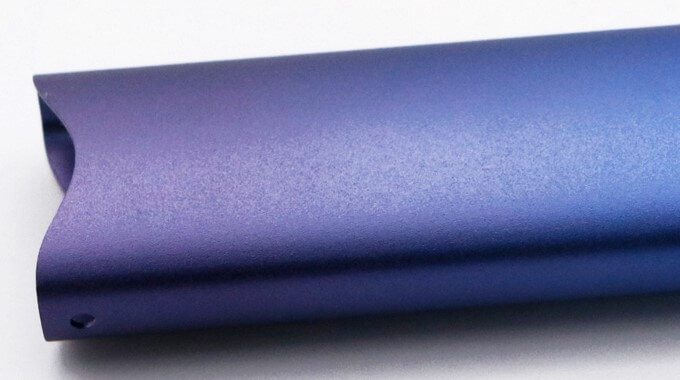
3.Process measures and operating skills to reduce the deformation of aluminum alloy CNC machined parts
There are many reasons for the deformation of aluminum parts, which are related to the material, part shape, production conditions, etc. There are mainly the following aspects: deformation caused by internal stress of the blank, deformation caused by cutting force, cutting heat, and deformation caused by clamping force. The following are the process measures to reduce the deformation of aluminum alloy CNC machining parts:
1) Reduce the internal pressure of hair cultivation
The internal stress of the blank can be partially eliminated by natural or artificial aging, vibration treatment and other methods. Pretreatment is also an effective process method. For rough blanks, due to the large machining allowance, the deformation after CNC machining is also large. If the excess part of the blank is cut off by CNC machining in advance and the machining allowance of each part is reduced, it can not only reduce the deformation of subsequent CNC machining, but also release some internal stress after a period of pre-CNC machining.
2) Improve the cutting ability of the tool
The material and geometric parameters of the tool have an important influence on the cutting force and cutting heat. The correct selection of the tool is crucial to reduce the deformation of aluminum alloy CNC machining parts.
① Reasonable selection of tool geometric parameters.
- Rake angle
Under the condition of maintaining the strength of the blade, the rake angle should be appropriately larger. On the one hand, it can grind a sharp edge, and on the other hand, it can reduce cutting deformation, make chip removal smooth, and thus reduce cutting force and cutting temperature. But avoid using tools with negative rake angles.
- Back Angle
The size of the back angle has a direct impact on the wear of the back cutter face and the surface quality of CNC machining. Cutting thickness is an important condition for selecting the back angle. During rough milling, due to the large feed rate, heavy cutting load, and high heat generation, the tool requires good heat dissipation conditions, so a smaller back angle should be selected. During fine milling, the cutting edge is required to be sharp, the friction between the back cutter face and the CNC machining surface is reduced, and the elastic deformation is reduced, so a larger back angle should be selected.
- Helix Angle
In order to make milling smooth and reduce milling force, the helix angle should be as large as possible.
- Main Rake Angle
Properly reducing the main rake angle can improve the heat dissipation conditions and reduce the average temperature of the machining area.
② Improve tool structure.
- Reduce the number of milling cutter teeth and increase the chip space.
Due to the large plasticity of aluminum materials, the cutting deformation is large during machining, and a larger chip space is required, so the chip groove bottom radius should be larger and the number of milling cutter teeth should be less.
- Fine grinding of cutter teeth.
The roughness value of the tooth edge should be less than Ra=0.4um. Before using a new tool, use a fine oil stone to lightly grind the front and back sides of the cutter teeth several times to eliminate the burrs and fine serrations left during grinding. This not only reduces cutting heat, but also reduces cutting deformation.
- Strictly control the wear standard of the tool.
After the tool is worn, the surface roughness value of the workpiece increases, the cutting temperature increases, and the deformation of the workpiece increases. Therefore, in addition to selecting tool materials with good wear resistance, the tool wear standard should not be greater than 0.2mm, otherwise it is easy to produce built-up edge. During cutting, the workpiece temperature should generally not exceed 100℃ to prevent deformation.
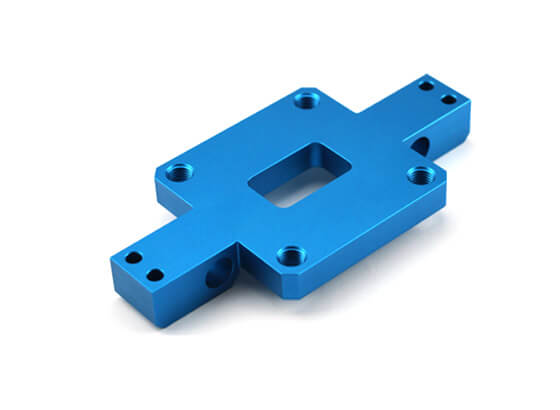
3) Improve the clamping method of aluminum alloy CNC machined parts
For thin-walled aluminum CNC machined parts with poor rigidity, the following clamping methods can be used to reduce deformation:
① Three-jaw self-centering chuck or spring chuck
For thin-walled bushing parts, if a three-jaw self-centering chuck or spring chuck is used for radial clamping, the workpiece will inevitably deform once it is released after CNC machining. At this time, a method with better rigidity should be used to clamp the axial end face. Use aluminum to process the inner hole of the part for positioning, insert the self-made threaded mandrel into the inner hole of the part, press the end face with a cover plate and tighten it with a nut. When processing the outer circle, clamping deformation can be avoided, so as to obtain satisfactory CNC processing accuracy.
② Vacuum suction cup
When CNC processing thin-walled and thin-plate workpieces, it is best to use a vacuum suction cup to obtain a uniformly distributed clamping force. Then use a smaller amount of cutting for processing, which can well prevent the deformation of aluminum CNC processed parts.
③ Filling method
The filling method can also be used. In order to increase the process rigidity of thin-walled workpieces, a medium can be filled inside the workpiece to reduce the deformation of the workpiece during clamping and cutting. For example, urea melt containing 3% to 6% potassium nitrate is poured into the workpiece. After CNC processing, immerse the aluminum alloy CNC processed parts in water or alcohol, dissolve the filler and pour it out.
4) Reasonable arrangement of the process
During high-speed cutting, due to the large CNC processing allowance and intermittent cutting, the milling process often produces vibration, affecting the CNC processing accuracy and surface roughness. Therefore, the CNC high-speed cutting process can generally be divided into: roughing-semi-finishing-angle clearing-finishing and other processes. For parts with higher precision requirements, sometimes secondary semi-finishing is required, and then finishing. After roughing, the parts can be cooled naturally to eliminate the internal stress caused by roughing and reduce deformation.
The remaining allowance after roughing should be greater than the deformation, generally 1-2mm. During finishing, the finished surface of the part should maintain a uniform CNC machining allowance, generally 0.2-0.5mm, so that the tool is in a stable state during the CNC machining process, which can greatly reduce cutting deformation, obtain good CNC machining surface quality, and ensure product accuracy.
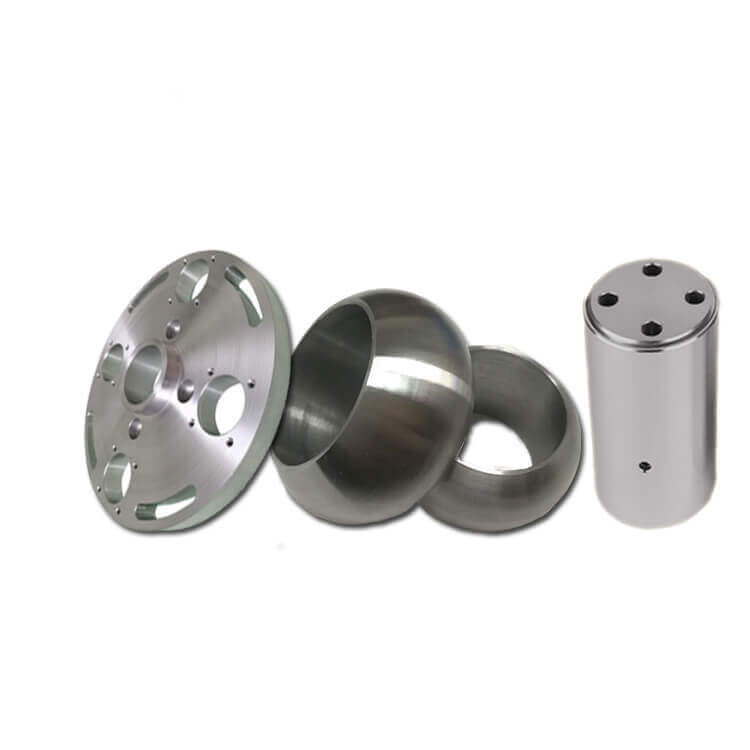
4.Operational skills to reduce deformation of aluminum alloy CNC machining parts
In addition to the above reasons, in actual operation, the operation method is also very important.
1) Symmetrical processing
For parts with large CNC machining allowances, in order to have better heat dissipation conditions during CNC machining and avoid heat concentration, symmetrical processing should be used during CNC machining. For example, if a 90mm thick sheet needs to be processed to 60mm, if one side is milled immediately after the other side is milled, and the final size is reached in one go, the flatness can reach 5mm; if symmetrical processing with repeated feeding is adopted, each side is processed twice, and the final size is reached, the flatness can be guaranteed to be 0.3mm.
2) Multi-layer processing
If there are multiple cavities on the plate-like parts, it is not advisable to use the sequential processing method of one cavity by one cavity during CNC processing, which is easy to cause uneven force and deformation of the aluminum CNC machined parts. Multi-layer processing is adopted, each layer is processed to all cavities at the same time, and then the next layer is processed, so that the parts are evenly stressed and deformation is reduced.
3) Cutting amount
Reduce cutting force and cutting heat by changing cutting amount. Among the three elements of cutting amount, the back cutting amount has a great influence on cutting force. If the machining allowance is too large, the cutting force of one pass will be too large, which will not only deform the aluminum alloy CNC machined parts, but also affect the rigidity of the machine tool spindle and reduce the durability of the tool. If the back cutting amount is reduced, the production efficiency will be greatly reduced. However, this problem can be overcome by using high-speed milling in CNC machining. While reducing the amount of back cutting, as long as the feed rate is increased accordingly and the machine speed is increased, the cutting force can be reduced to ensure the efficiency of CNC machining.
4) Cutting sequence
Rough machining emphasizes improving the efficiency of CNC machining and pursuing the removal rate per unit time. Generally, reverse milling can be used, that is, the excess material on the surface of the blank is removed at the fastest speed and in the shortest time, basically forming the geometric contour required for finishing. Finishing emphasizes high precision and high quality, and it is advisable to use down milling, because the cutting thickness of the cutter teeth gradually decreases from the maximum to zero during down milling, which greatly reduces the degree of CNC machining hardening and the degree of deformation of aluminum CNC machined parts.
5) Clamping force
Thin-walled workpieces are deformed due to clamping during CNC machining, and even cannot be finished. In order to minimize the deformation of the workpiece, the clamping piece can be loosened before finishing to the final size, so that the workpiece can return to its original state freely, and then gently clamped. As long as the workpiece can be fully clamped (based on the feel), the ideal CNC machining effect can be obtained. In short, the clamping force should preferably be applied on the support surface, and the clamping force should be applied in the direction of good workpiece rigidity. Under the premise of ensuring that the aluminum CNC machined parts do not loosen, the smaller the clamping force, the better.
6) Special cases
When processing parts with cavities, try not to let the milling cutter cut directly into the part like a drill bit when processing the cavity, which will cause insufficient space for the milling cutter to accommodate chips and poor chip removal, resulting in overheating, expansion, and cutter breakage and other unfavorable phenomena. First drill out the hole with a drill bit of the same size or larger than the milling cutter, and then mill with the milling cutter. Alternatively, you can also use CAM software to create a spiral grooving program.
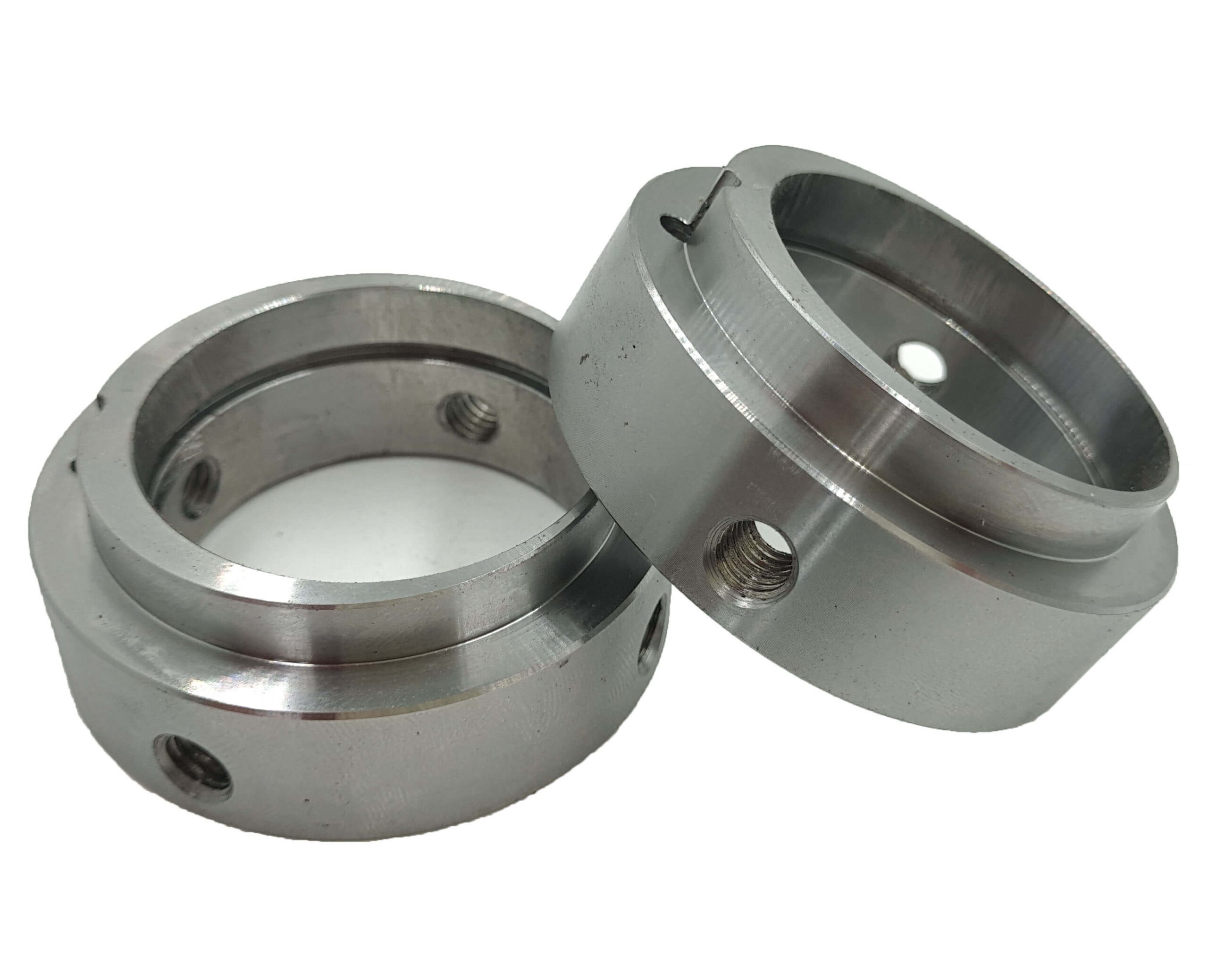
1 Comment
I’ve read a few excellent stuff here. Certainly value bookmarking for revisiting. I surprise how a lot attempt you set to create such a wonderful informative website.